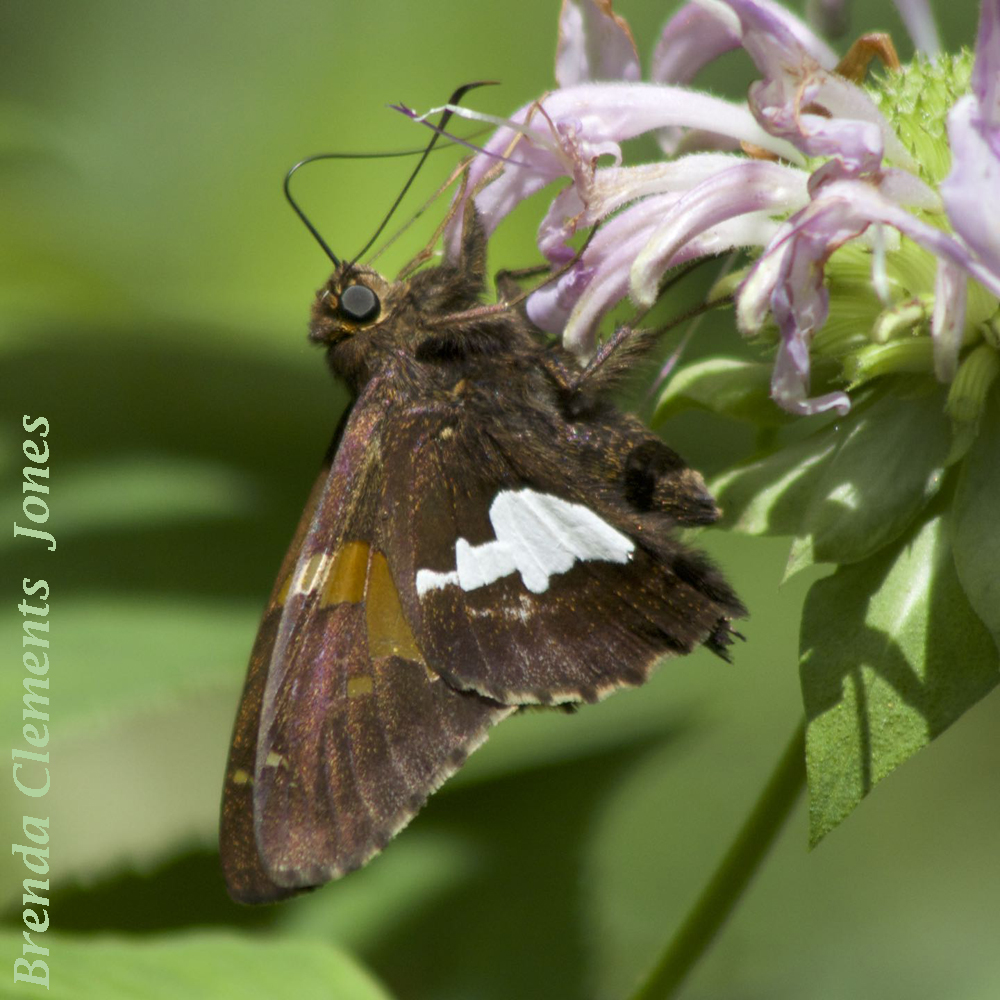
With a wingspan of 1.75 to 2.5 inches the Silver-spotted Skipper (Epargyreus clarus) is the largest of the skippers. But being the largest of the skippers doesn’t make it LARGE compared to some moths and butterflies.

The Silver-spotted Skipper is certainly the skipper that I see most often as I check out the trails here on my mountain and enjoy my gardens. As my Dad would say, they seem to be ubiquitous! As adults they use their long tongues or proboscices to slurp up the nectar of blue, red, pink, and purple flowers, and minerals of mud, and even animal feces.

The primary host plant of Silver-spotter Skippers is the Black Locust Tree. Others are plants in the legume (Fabaceae) family.

The young caterpillar creates a “tent” folded in a leaf of its host plant where it spends days, venturing out at night to feed on leaves of the host plant. The host plant, often a Black Locust or Bush Clover, or False Indigo. Older caterpillars will move on to create a larger “tent” for themselves using more than one leaf.
